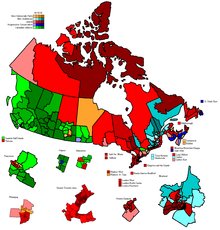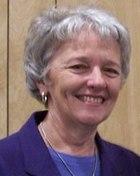
Back Kanadische Unterhauswahl 2000 German Elecciones federales de Canadá de 2000 Spanish Élections fédérales canadiennes de 2000 French Elezioni federali in Canada del 2000 Italian 2000年カナダ総選挙 Japanese Канадские федеральные выборы (2000) Russian 2000 Canadian federal election SIMPLE 2000年加拿大联邦大选 Chinese
| ||||||||||||||||||||||||||||||||||||||||||||||||||||||||||||||||||||||||||||||||||||||||||||||||
301 seats in the House of Commons 151 seats needed for a majority | ||||||||||||||||||||||||||||||||||||||||||||||||||||||||||||||||||||||||||||||||||||||||||||||||
|---|---|---|---|---|---|---|---|---|---|---|---|---|---|---|---|---|---|---|---|---|---|---|---|---|---|---|---|---|---|---|---|---|---|---|---|---|---|---|---|---|---|---|---|---|---|---|---|---|---|---|---|---|---|---|---|---|---|---|---|---|---|---|---|---|---|---|---|---|---|---|---|---|---|---|---|---|---|---|---|---|---|---|---|---|---|---|---|---|---|---|---|---|---|---|---|---|
| Opinion polls | ||||||||||||||||||||||||||||||||||||||||||||||||||||||||||||||||||||||||||||||||||||||||||||||||
| Turnout | 64.1%[1] ( | |||||||||||||||||||||||||||||||||||||||||||||||||||||||||||||||||||||||||||||||||||||||||||||||
| ||||||||||||||||||||||||||||||||||||||||||||||||||||||||||||||||||||||||||||||||||||||||||||||||
| ||||||||||||||||||||||||||||||||||||||||||||||||||||||||||||||||||||||||||||||||||||||||||||||||

The 2000 Canadian federal election was held on November 27, 2000, to elect members to the House of Commons of Canada of the 37th Parliament of Canada. Prime Minister Jean Chrétien's Liberal Party won a third majority government.
Since the previous election of 1997, small-c conservatives had begun attempts to merge the Reform Party of Canada and the Progressive Conservative Party of Canada as part of the United Alternative agenda. During that time, Jean Charest stepped down as leader of the Progressive Conservatives and former Prime Minister Joe Clark took over the party and opposed any union with the Reform Party. In the spring of 2000, the Reform Party became the Canadian Alliance, a political party dedicated to uniting conservatives together into one party. Former Reform Party leader Preston Manning lost in a leadership race to Stockwell Day who became leader of the new Canadian Alliance party.
The federal government called an early election after being in office for close to three and a half years (with a maximum allowed mandate of five years). The governing Liberal Party of Canada won a third consecutive majority government, winning more seats than in 1997. The Canadian Alliance only made minor gains, and an Eastern breakthrough did not happen. The Bloc Québécois, New Democratic Party and the Progressive Conservatives all suffered slight losses.
This was the last election as of 2025 in which an incumbent government successfully defended its parliamentary majority. It was also the last election in which a single party won more than 40% of the popular vote, although the Conservative Party under Stephen Harper in 2011 (39.62%) and the Liberal Party under Justin Trudeau in 2015 (39.47%) would both come close. This was the only election contested by the Canadian Alliance and the last by the Progressive Conservatives (as they both merged into the Conservative Party of Canada in 2003). This was also the first election in which Nunavut was its own separate territory (before, it was part of the Northwest Territories).
- ^ Pomfret, R. "Voter Turnout at Federal Elections and Referendums". Elections Canada. Elections Canada. Retrieved February 10, 2012.
Cite error: There are <ref group=lower-roman> tags or {{efn-lr}} templates on this page, but the references will not show without a {{reflist|group=lower-roman}} template or {{notelist-lr}} template (see the help page).






